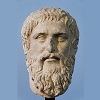7.4: The Twelfth Century in Western Europe
- Page ID
- 132378
In the twelfth century, many of Europe’s kingdoms saw a gradual centralization of state power.
England was one of the most centralized states. In 1066, the Duke of Normandy, William the Bastard, invaded England, defeated the English army, and made himself the king of England. William the Conqueror's conquest moved the culture, language, and institutions of England closer to those of France. Although England looked more feudal, it nevertheless retained a centralized bureaucratic apparatus. He used this bureaucracy to conduct a nationwide census, a feat of which no European state outside of the Byzantine Empire was capable. Looking ahead, for the most part, its monarchs, particularly Henry I (r. 1100 – 1135) and Henry II (r. 1154 – 1189), were innovative and clever administrators, creating a network of royal courts and a sophisticated office of tax collection known as the Exchequer.
.png?revision=1&size=bestfit&width=595&height=474)
France had entered the tenth and eleventh centuries as the most loosely-governed kingdom of Europe. In 987, France’s nobles elected Hugh Capet, the count of Paris, as king, effectively replacing the Carolingian dynasty. The Capetian Dynasty’s kings directly controlled only the lands around Paris. After the Norman conquest of England in 1066, the Norman kings of England were also dukes of large French territories. Thus, for the first part of the twelfth century, much of France was under the effective control of the English crown.
.png?revision=1&size=bestfit&width=707&height=532)
In spite of these challenges, the Capetian monarchs gradually built their kingdom into a functional state. They cultivated a reputation as defenders of Christianity in order to gain legitimacy from the Church. They also sought to enforce the feudal obligations that the powerful nobles owed to the crown, often calling on them to serve militarily so as to create a habit of obedience to the king.
.png?revision=1)
To the southwest, the rise of the Muslim Almoravid Empire under the rule of aggressively expansionist Muslim religious reformers in North Africa briefly put the Reconquista in jeopardy. But, by the early twelfth century, it had resumed, with the Muslim stronghold of Zaragoza falling to Christian armies in 1118.
After the First Crusade, those knights who traveled to Spain to help its Christian kings fight Muslims received the same forgiveness of sins that the papacy granted to the crusaders in the Levant. Over the twelfth century, four major Christian kingdoms would emerge in the Iberian Peninsula: Portugal, Leon-Castile, Navarre, and Aragon. These kingdoms would develop a sophisticated system of taxation in order to fund the Reconquista. In the later twelfth century, they faced the challenge of the Almohad Empire that emerged from the Islamic Maghreb to unite Muslim Spain and North Africa. By the 1150s, Christian Spain was on the defensive once again.
In Scandinavia, too, a set of strong monarchies had emerged in Denmark and Norway by the end of the twelfth century.


